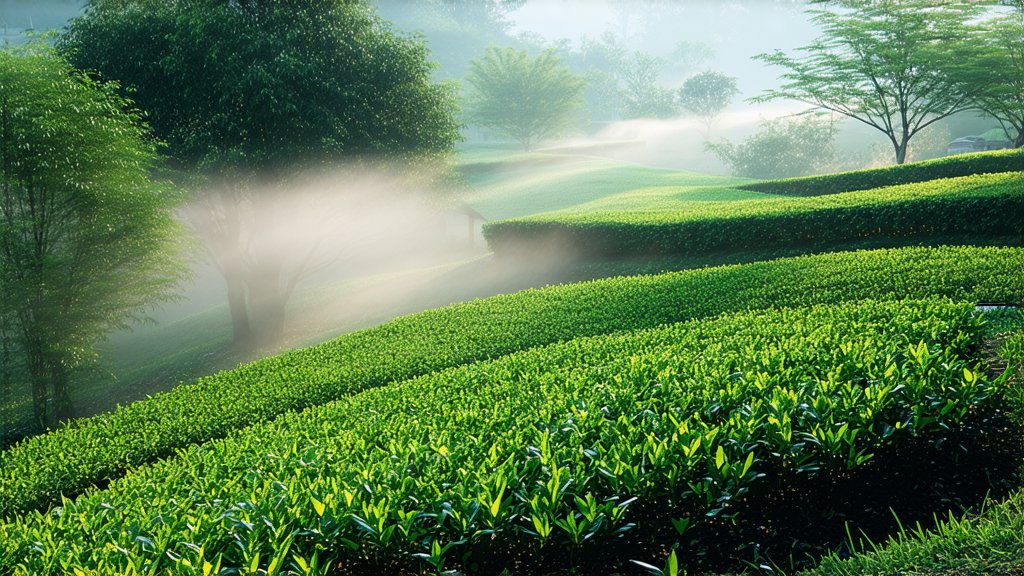
In the vast and diverse landscape of Chinese tea culture, few varieties hold as prestigious a position as Longjing tea, also known affectionately as "Dragon Well." Originating from the picturesque hills surrounding West Lake in Hangzhou, Zhejiang Province, Longjing has captivated tea connoisseurs for centuries with its unique flavor profile, exquisite appearance, and rich cultural heritage. This article embarks on a journey to explore the history, varieties, meticulous craftsmanship, and art of appreciating Longjing tea, inviting international readers to immerse themselves in the enchanting world of this iconic Chinese green tea.
A Journey Through Time: The History of Longjing Tea
Longjing tea's roots trace back over a thousand years, with its earliest recorded mention dating to the Tang Dynasty (618-907 AD). However, it was during the Qing Dynasty (1644-1912) that Longjing truly gained prominence, particularly under the reign of Emperor Kangxi who proclaimed it the "Imperial Tea." The name "Longjing," meaning "Dragon Well," is derived from a well located near the original tea gardens, believed to be the dwelling place of a dragon in ancient folklore. As tales of its extraordinary quality spread, so did its popularity, eventually earning it the moniker "China's Finest Green Tea."
Varieties of Longjing: A Symphony of Flavors
While Longjing is often considered a singular tea type, there exist subtle variations within its family, each offering distinct characteristics yet united by their shared origin and processing methods. The most renowned among them are:
-
Xihu Longjing (West Lake Dragon Well): Grown in the designated areas around West Lake, these teas are prized for their exceptional quality, with a delicate balance of sweetness and umami, and a lingering aftertaste that reflects the terroir of this UNESCO World Heritage site.
-
Meiling Longjing (Mermaid or Meiling Dragon Well): Produced in Meijiawu Village, this variety boasts a slightly more robust flavor profile compared to Xihu Longjing, often described as having a fuller body and a hint of chestnut.
-
Yuhang Longjing (Yuhang Dragon Well): Grown further afield in Yuhang District, this tea shares similarities with Meiling Longjing but may exhibit a slightly more astringent taste due to differences in soil composition and elevation.
Each of these varieties contributes to the rich tapestry of Longjing tea, showcasing how even within a single tea type, nature's nuances can create a symphony of flavors and aromas.
The Art of Craftsmanship: From Leaf to Cup
The magic of Longjing tea lies not only in its genetic makeup but also in the intricate traditional techniques employed during its cultivation and processing. Here's an overview of the meticulous steps involved:
-
Cultivation: Longjing tea bushes are typically grown on terraced slopes, allowing for optimal sunlight exposure and drainage. Pruning is done meticulously to encourage new growth and maintain the health of the plants.
-
Harvesting: The prime picking season for Longjing tea falls between late March and early April, when the first tender shoots and leaves emerge. Only the youngest leaves and buds are handpicked, ensuring the highest quality.
-
Withering: Freshly harvested leaves undergo a gentle withering process, either by spreading them out in the shade or using specialized withering machines, to reduce moisture content and prepare them for the next stage.
-
Fixation (Pan-Frying): This is where Longjing tea truly comes to life. The withered leaves are quickly heated in large woks or pans over high heat, which halts oxidation and releases the characteristic aroma. Masterful hand movements ensure even heating and prevent burning.
-
Shaping: Following fixation, the leaves are skillfully shaped by hand or machine into their flat, needle-like form, resembling the blades of a dragon's claw – hence another poetic name for Longjing, "Dragon's Nails."
-
Drying: Finally, the shaped leaves are dried at lower temperatures to remove any remaining moisture, enhancing their crispness and preserving their freshness.
The result is a tea that embodies both the artistry of human hands and the purity of nature's gifts.
Savoring the Essence: Appreciating Longjing Tea
To truly appreciate Longjing tea is to engage all senses in a ritualistic experience that transcends mere consumption. Here's a guide to the art of tasting:
-
Preparation: Use water just off the boil (around 80°C or 176°F) to avoid scalding the delicate leaves. Rinse the teapot and cups with hot water to warm them up.
-
Infusion: Place approximately 3 grams of loose leaves per 150ml of water into a Yixing clay pot or glass vessel. Steep for about 1-2 minutes for the first infusion, allowing subsequent steepings to increase by 30 seconds each.
-
Observation: Admire the transformation of dry leaves into vibrant green as they unfurl gracefully in water, releasing a pale yellow-green liquor.
-
Aroma: Inhale deeply before taking your first sip, noting the fresh, vegetal scent with subtle floral notes.
-
Tasting: Take small sips, allowing the tea to coat your palate fully. Notice the initial sweetness followed by a gentle bitterness that quickly mellows into a lingering umami finish. Pay attention to the texture, which should be smooth and velvety.
-
Appreciation: Reflect on the harmony between flavors and aroma, and let your mind wander to the misty mountains of Hangzhou where these leaves began their journey.
In conclusion, Longjing tea is more than just a beverage; it is a testament to China's profound connection with nature and a symbol of the country's rich cultural heritage. From its storied past to the meticulous care taken in every step of its production, and finally, to the meditative act of savoring each cup, it encapsulates the essence of Chinese tea philosophy – harmony, balance, and appreciation for the simple beauties of life. For those seeking an authentic taste of China, Longjing tea offers a gateway into a world where tradition meets nature in perfect harmony.